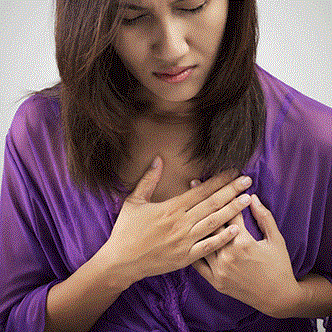
Among younger adults visiting the emergency department for chest pain, women may be getting the short end of the stick. Compared with men of similar age, women experienced longer wait times and were less likely to undergo basic tests or be hospitalized
or admitted for observation to diagnose a heart attack, according to new research being presented at the American College of Cardiology’s 70th Annual Scientific Session.
The study is the first to examine emergency room management of chest pain among younger adults between 18 and 55 years of age. Heart disease is the leading cause of death in women and is becoming more common in younger adults. About one-third of women
who were hospitalized for a heart attack in the past two decades were younger than 55, a proportion that has grown in recent years.
“Women should trust their instincts,” said Darcy Banco, MD, an internal medicine resident at NYU Langone Health and the study’s lead author, adding that they should seek medical care right away if they experience new chest discomfort,
difficulty breathing, nausea, vomiting, fatigue, sweating or back pain – all of which could be signs of a heart attack.
Chest pain or discomfort is the most common symptom of a heart attack in both men and women, but research shows that women can have a broader range of accompanying symptoms that may not initially be recognized as a sign of a heart attack. Chest discomfort
caused by a heart attack can be perceived as pain, pressure, tightness or another uncomfortable sensation.
The study is based on data collected by the National Hospital Ambulatory Medical Care Survey between 2014-2018. Researchers extrapolated the data to represent an estimated 29 million emergency department visits for chest pain in the U.S. among adults
aged 18-55; women comprised nearly 57% of those visits.
Researchers found that women reporting chest pain were equally likely to arrive at the hospital by ambulance but significantly less likely than men to be triaged as emergent. On average, women waited about 11 minutes longer to be evaluated by a clinician.
Women were also significantly less likely to undergo an electrocardiogram (ECG), the standard initial test used to diagnose a heart attack, or to receive cardiac monitoring or be seen by a consultant, such as a cardiologist.
Medical guidelines recommend that all patients with possible heart attack symptoms receive an ECG within 10 minutes of arrival in the emergency department to minimize the time to treatment.
“Time is very important when you’re treating heart attacks,” Banco said. “The longer people wait, the worse their outcomes can be.”
The study did not look at the reasons why women with chest pain were treated differently than men. Banco suggested that pre-conceived notions of risk – rather than overt discrimination – likely play a role. Historically, heart attacks have
been most common in older men, and clinicians may be less likely to suspect a heart attack among patients outside of that demographic. Banco suggested clinicians should appreciate that younger women represent a growing portion of heart attack patients.
“We, as health care providers, should continue to learn about how best to triage and diagnose patients with heart attacks, particularly among those who have historically been under-diagnosed or under-treated,” Banco said. “We are learning
that heart attacks take many forms. We need to continue to raise awareness and make sure all patients are diagnosed and treated properly, even if they’re not the ‘classic’ demographic for a heart attack. [This knowledge] will help
us improve care for all.”
To learn more about women and heart disease, visit CardioSmart.org/Women.